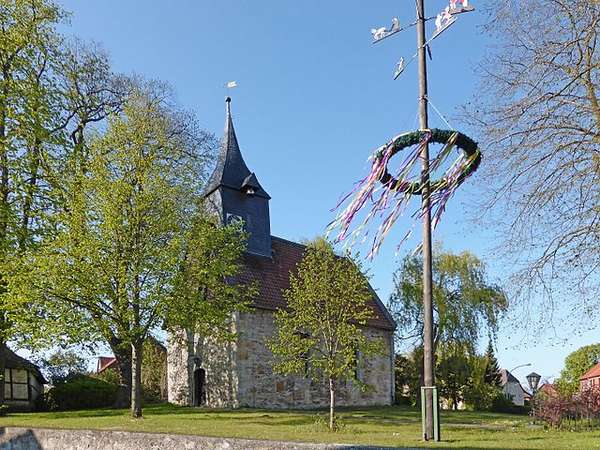Dancing into May on Walpurgis Night…
- 30. April 2021 - General, Germany, Holiday, Knowledge, Old Customs, Traditions
The transition into the merry month of May in the night from 30 April to 01 May is until today celebrated in many places in Germany and Europe in different ways. The cold season is replaced by the warm season and "evil spirits" are supposed to be driven away.
Pagan origins and a Christian name giver
According to legend, on the so-called "Walpurgis Night" the witches gathered on the night of 01 May on the Brocken (Blocksberg) in the Harz Mountains, celebrated a lavish party and allied themselves with the devil. The famous witches' festival is referred to in Johann Wolfgang von Goethe's "Faust" and Ottfried Preußler's children's book "The Little Witch".
Probably pagan, i.e. non-Christian, customs were originally celebrated to mark the end of winter, the beginning of spring or similar. This was demonized by the Christian church which is presumably how the myth of the witches' festival came about.
Some of the customs that still exist today, such as driving away the winter or evil spirits and witches, for example by fire, cracking whips, ringing bells, gunshots, brooms, etc., can therefore probably be traced back to pagan and Christian traditions and reasons.
The name Walpurgis Night is derived from St. Walburga (also Walpurga or Walpurgis). The Anglo-Saxon abbess, who lived in the 8th century, was probably canonized on 01 May (about 870) by Pope Hadrian II. This date served as a day of remembrance for her until the Middle Ages (today it is celebrated on February 25, the alleged date of her death). Among other things, St. Walburga is considered a patron saint against diseases and epidemics, rabies, famine, crop failure, and "evil spirits" in general.
Witches' dances, May fires and dancing into May
Nowadays, the night of 30 April to 01 May is celebrated very differently from region to region. There some regions in Germany celebrating with witch dances, disguises and children playing pranks. In other areas, May fires are still a tradition (in other regions similar fires are held at other times, for example the Biikebrennen in North Frisia). Among other things, there is the tradition of the “Maisprung” (May Jump), where lovers jump together over the burned down fire.
Connected to a fertility symbolism are other traditions as for example the setting up of the Maypoles on 30 April or 01 May. If they are already set up on the last day of April, this custom often turns into a dance around the maypole. May kings are also sometimes determined by means of various games.
Another tradition is that of the so-called “Liebesmaien” (love maypoles). Small maypoles are placed in front of the ladies’ houses by the bachelors as a sign of favor. A far less flattering counterpart to this are the so-called “Schandmaien” (shame maypoles).
Even if not always celebrated traditionally, the dancing into May is widespread throughout Germany. Often this simply means parties, concerts or other dance events, e.g. in clubs. This is surely favored by the fact that 01 May as May Holiday and International Workers’ Day is an official holiday in Germany and accordingly work-free.
A typical drink is by the way among other things the “Maibowle” (May punch, with woodruff).


0 comments